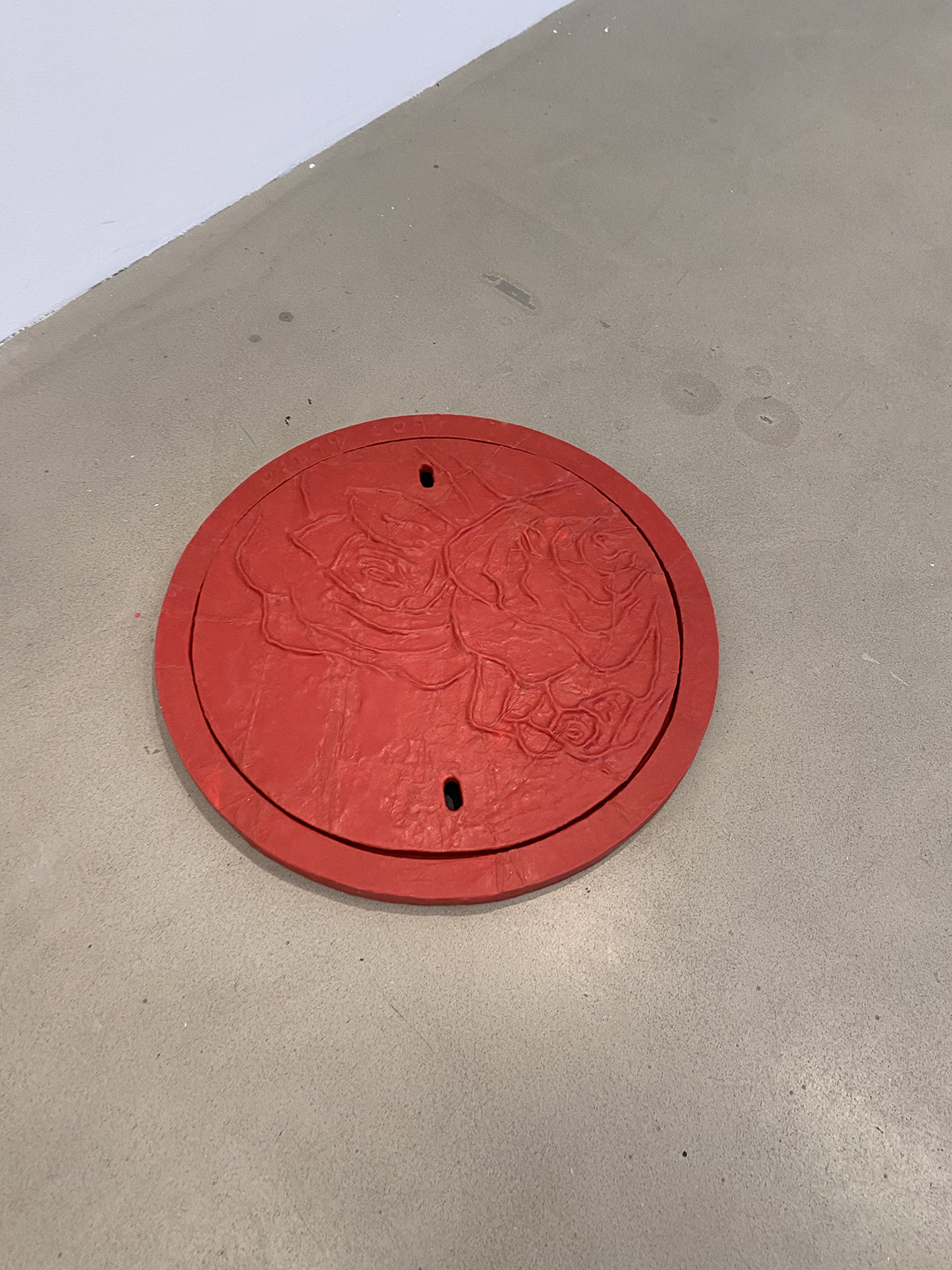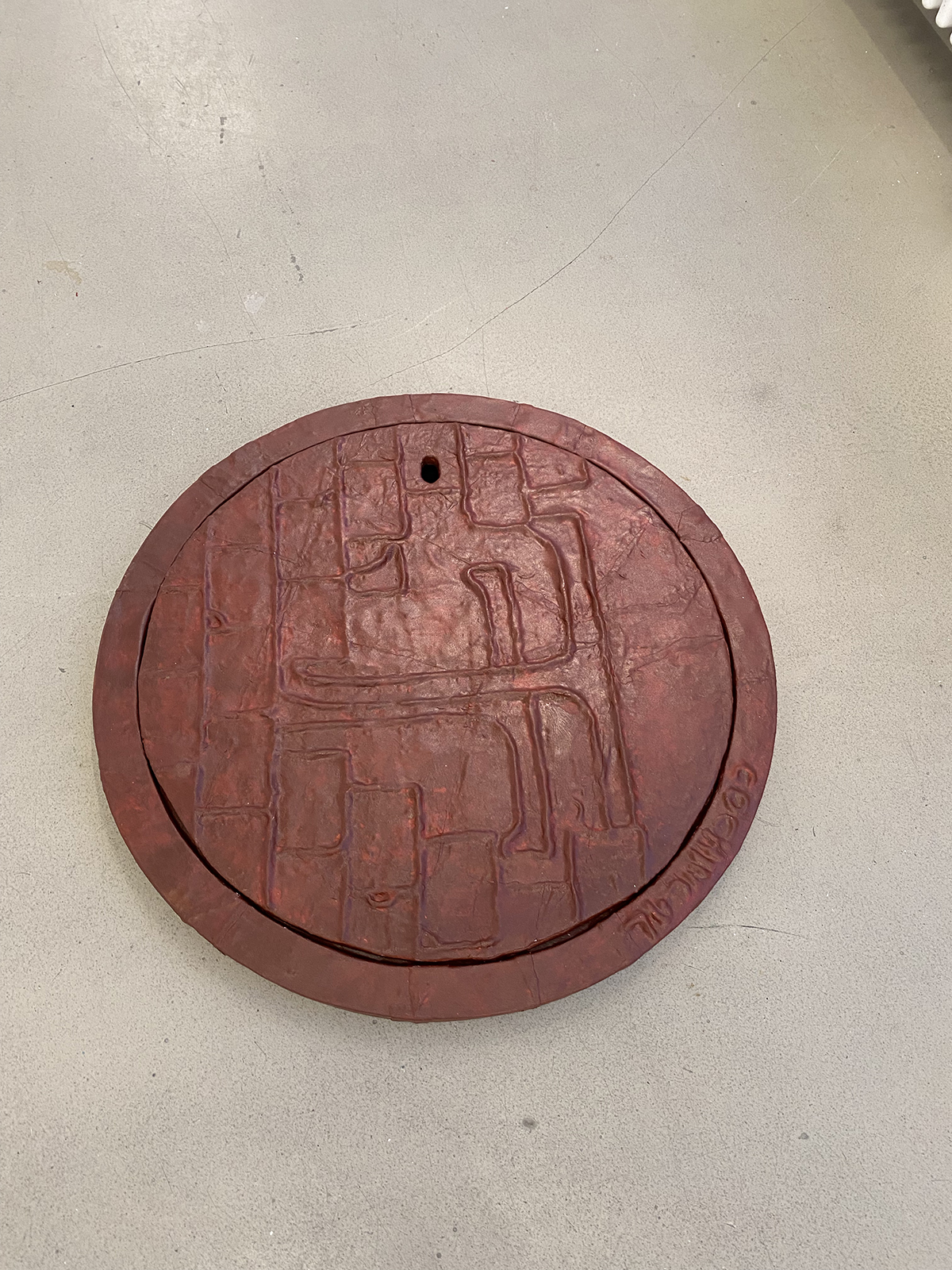

Cochineal, Cinnabar
2021
Audio: 01:00:00 Looped from two speakers (inside sculptures)
Sculptures: MDF, plaster, thermoplastic and acrylics, 80x80 cm (each)
At once, one of the ugly sisters
The one whose face was blotched with blisters
Sneaked up and grabbed the dainty shoe
And quickly flushed it down the loo.[1]
First time you use blush: You're selling toilet paper, it's the early oughts and you don't find it embarrassing. You're walking door to door, unsuccessfully convincing your neighbours to buy in bulk. Despite the harsh winter wind, your face doesn't flush. When you come home without having made a single sale your sister produces some pink powder and it is notable that only when returning to your streets all rosey cheeked do you rid yourself of the product and are confidently in the know of what will soak in your communal sewer system for the coming months.
First time anyone uses blush: Ancient Egypt: A man stirs natural pigment with fat for that red shimmer and applies on his cheeks. 2000 years later, Ancient Rome: A man mixes lead with a bright red mineral called cinnabar and applies to his cheeks. Much later that mixture was found to cause cancer, dementia, and death.
Enamoured of his own feminine beauty and blush, frustrated by his inability to clasp his own reflection the youth (Narcissus) beats his bare breasts, the blows colour his skin with rosy glow of pain that ironically mirrors the rubor on his cheeks and looks none other than apples do.[2]
Now blush has bounce Maybelline.[3]
[1] A collection of six traditional fairy tales re-written as comedic poems by Roald Dahl, 1982.
[2] Shakespeares mythological feuilletage: A methodological induction by Yves Peyré, 2017.
[3] Maybelline advertisement for Bouncy Blush, 2011
Documentation: Fritz Hendrik